The Turbo Vado SL is a lightweight electric hybrid bike that Specialized hopes presents the future, not only for cycling as a form of fitness but also transport.
The headline stats are impressive: a sub-15kg bike in most sizes (15.41kg for this size large example), a claimed range of 130km in the bike’s lowest assistance mode and a keen retail price for an ebike (£2,600 / €2,999 / $3,500).
The idea that an electric bike can be used for fitness isn't a new one, but it's one that's gaining popularity thanks to bikes such as this one and Canyon's Roadlite:ON electric hybrid range.
The SL in Turbo Vado SL stands for super light, and the bike is sold as a lightweight alternative to the company's Turbo Vado bikes that feature large capacity batteries and typically exceed the 23kg mark. There's no doubt the Turbo Vado SL one of the best electric hybrid bikes.
Unlike most electric bikes on sale today, the 15kg Turbo Vado SL is one that most people can lug around, manoeuvre up and down steps and into and out of the back of a car without too much difficulty.
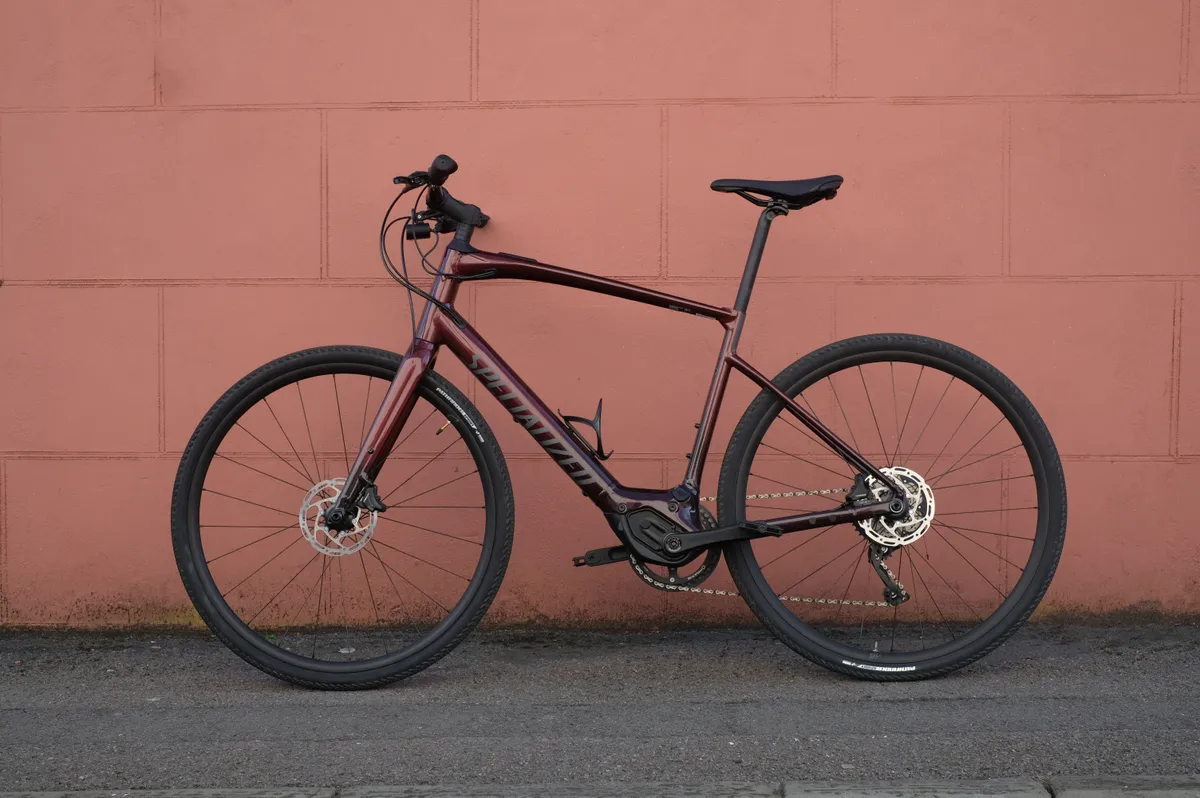
Specialized Turbo Vado SL 4.0 frameset
A lot of this lightness comes from the Turbo Vado SL’s alloy frame, which makes use of Specialized’s weight saving, strength boosting Smartweld technology.
The own-brand mid-drive motor uses a lightweight magnesium housing and is claimed to weigh less than 2kg. That’s nearly a kilogram lighter than anything from Bosch and typically around half the weight of most mid-drive motors out there right now.
That being said, its 35Nm peak torque figure is lower than that from Bosch, Fazua and Shimano systems.
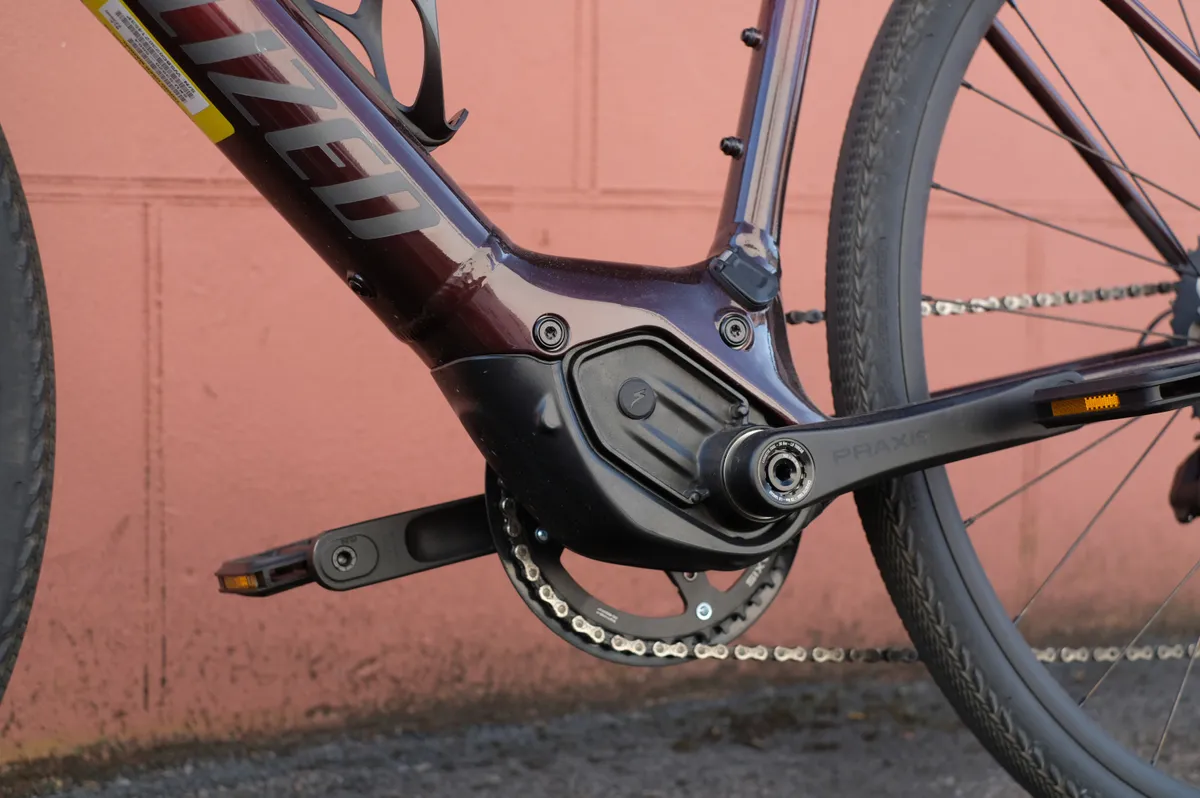
The Specialized’s 320Wh down-tube battery won’t be winning it any rounds of Top Trumps, but it can be extended via an optional (£320) 160Wh range extender battery that occupies one of the frame’s two bottle cage mounts.
A full charge of the battery takes a little over two hours using a regular household plug.
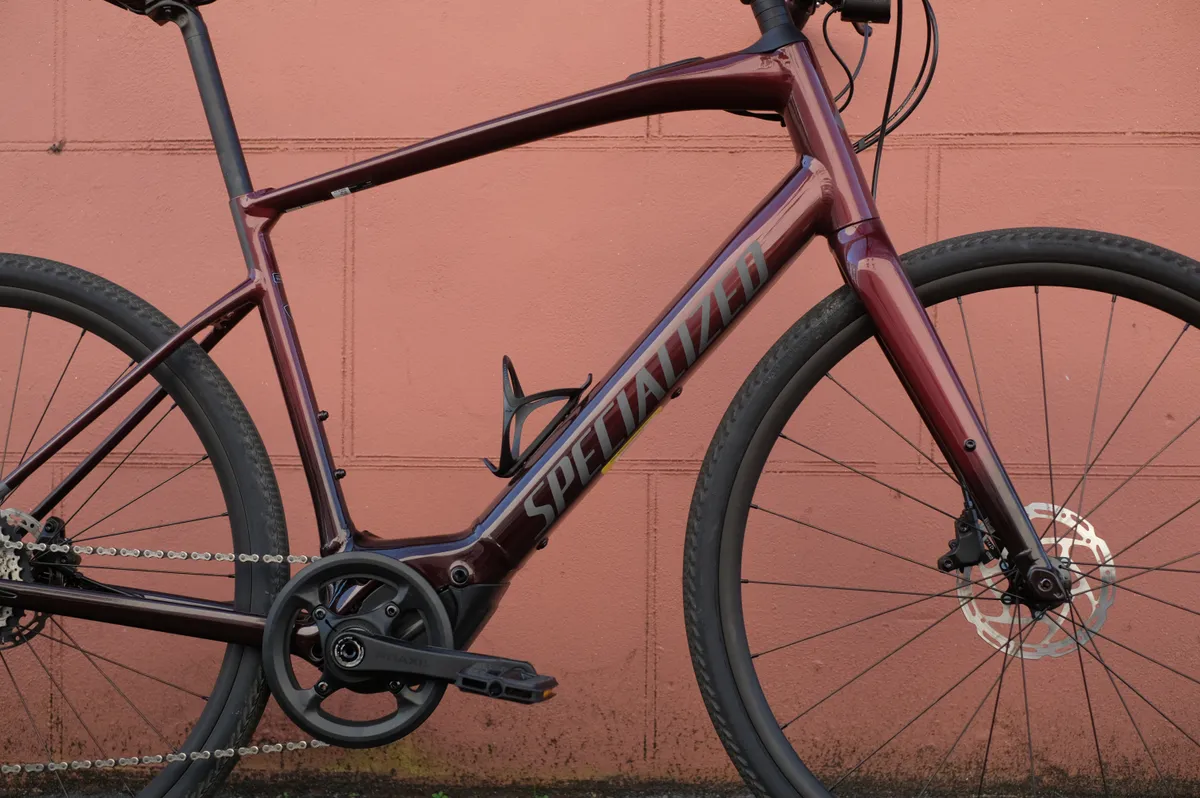
The frame is paired to a rigid aluminium fork that's Boost spaced.
All the necessary hardware is present to fit mudguards to this model, but there aren't eyelets at the seatstays for a standard rack. Specialized does sell a rack that fits the Turbo Vado SL but many buyers will already be looking across to the EQ model which arrives (albeit at a £200/$150 premium) with a Specialized rack and the company's DryTech mudguards as standard.
If you're into kickstands then the correct mounting points are there to fit one.
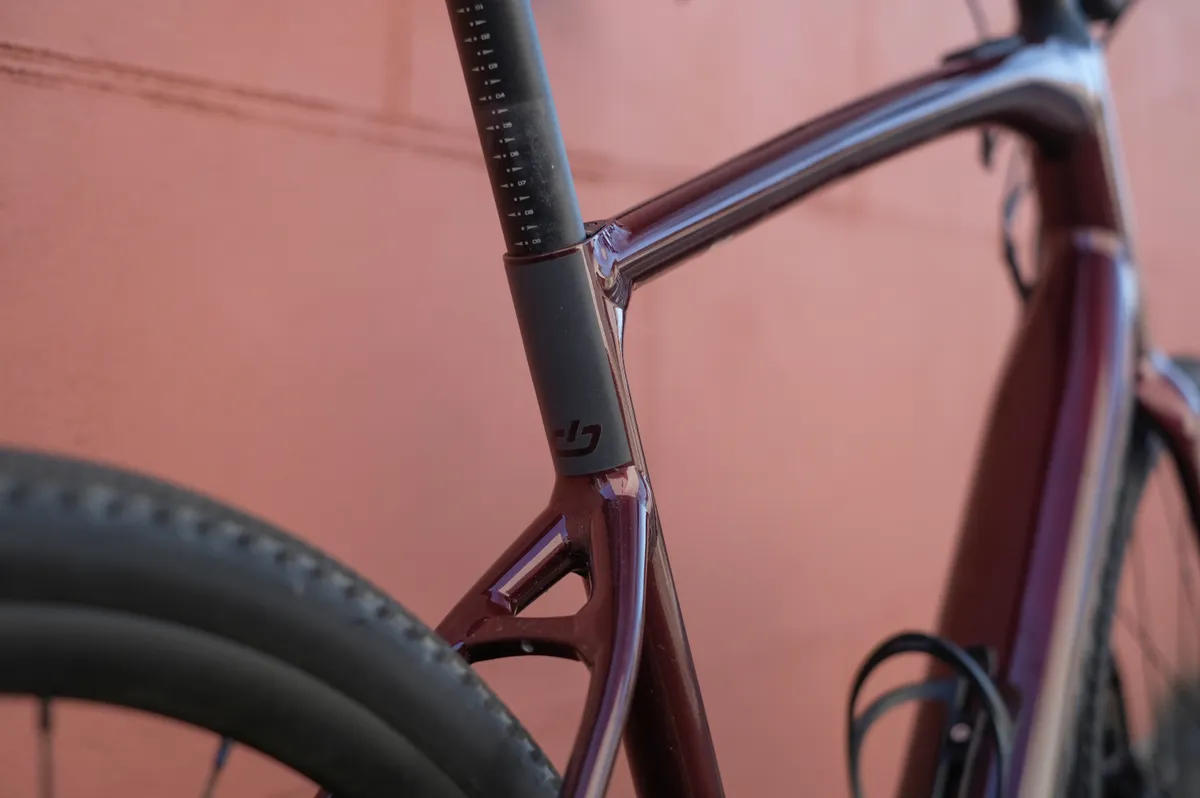
It’s not easy to make a hybrid look good, let alone an electric one, but I think Specialized has done a great job with the Turbo Vado SL.
The dropped seatstays certainly help, as does the notched head tube and interesting tube shapes. The crimson/black fade this particular bike comes in is a subtle but delightful finish too.
Specialized Turbo Vado SL 4.0 build kit
Specialized equips this entry-level Vado SL with plenty of own-brand components and by doing so makes the relatively modest retail price stretch a long way.
There's a 10-speed drivetrain that pairs a 44t Praxis chainring with a shifter, derailleur and 11-42t cassette from the Shimano Deore line. Tektro HD-R290 hydraulic disc brakes provide the stopping power.

An own-brand 700c wheelset with 21mm internal width rims and thru-axles supports Spesh’s own 38mm Pathfinder Sport tyres.
Eager eyes will spot the plastic cover at the top of the frame's head tube. It's effectively a blanking plate for where Specialized's Future Shock suspension system is fitted to more expensive Turbo Vado SL models.

There’s quality integrated LED lights front and rear. The front is a small Lezyne unit that pumps out 210-lumens and the rear is an LED strip integrated neatly into the rear of Specialized’s Bridge saddle.
Should you not get along with the Bridge, then the rear light unit can be bolted to any of Specialized's current saddles that include the SWAT mount (that's most if not all of them).
Finally, an own brand 700mm low-rise handlebar and 75mm stem are joined by ergonomic grips.

Specialized Turbo Vado SL 4.0 ride impressions
Switching on the Turbo Vado SL is done by a single press of the control unit that’s neatly integrated into the frame’s top tube. Then blue lights illuminate showing the battery level and which of the three motor assistance levels is selected. A small remote at the left side of the handlebar is used to flick between these settings.
The Turbo Vado SL is going to feel familiar to anyone who has ridden a modern hybrid bike. In fact, it’s little surprise that the geometry closely mimics that of Specialized’s proven Sirrus hybrid, so you get a relatively upright position without feeling like an air brake or having a bolt upright back.
Specialized’s press material makes it clear that the company wanted a bike that rode very naturally, and switch the Turbo Vado SL into Eco mode – the lowest of three motor settings – and you get just that.
The ‘it’s you but on a good day’ cliché is completely apt here. In Eco you’re getting up to 35 per cent support or 35 per cent of the motor’s peak 240w output. It’s enough to flatten nasty crests and keep your legs from really having to dig in on all but the harshest of inclines.
Some systems can be coaxed into giving you bursts of acceleration by changing your pedalling behaviour. Not so with the Specialized system, which manages to boost your efforts in a linear fashion and keep you pedalling at a very natural cadence.
The Specialized SL 1.1 lightweight motor is seriously quick to react, and in Eco mode there’s no discernible creeping or delayed shut off from the motor, adding to the bike’s natural feel.
Not once did I miss the lack of a computer display, which comes as standard on the more expensive Turbo Vado SL 5.0. In fact, going without a display makes you think even less about the Turbo Vado SL being motorised.

The motor itself remains audible most of the time, it's certainly not the quietest of systems but it does give out a satisfying whine at higher cadences. Combine that with the loud thunk of the Shimano gears and you end up with quite a fun soundtrack.
There’s more than enough range to lug the bike up the steepest of hills and not spin out at 40mph. The Shimano Deore components aren’t responsible for the smoothest nor the quietest of shifts but the action is positive, so you’re never left between gears. The chain is always kept taut thanks to the derailleur’s clutch.
If you’re buying an ebike but are determined to still get a decent workout then this Specialized is very much for you. I managed to get 107km of assistance from a single charge by keeping the bike strictly in Eco mode.
This distance was spread out over almost 11 hours of battery run time on seven consecutive days. Given the relatively hilly nature of my test routes, it makes Specialized’s official range claim of 130km for a charge feel completely possible – particularly for lighter riders than myself.
That’s easily a working week of commuting for a lot of people and all from a single charge. Should you need to add more, then the supplied charger will take you from flat to full in a little over two hours.

Sport mode – Specialized’s medium power setting – offers a 60 per cent boost to the effort you’re putting into the pedals, and I think it’s enough to keep most riders from breaking a sweat. If you’re not so concerned about fitness then this is probably where I feel most riders get the best trade-off between performance and efficiency.
Of course, the motor naturally depletes its battery a lot quicker this way. For example, using a combination of Sport and Turbo modes saw the bike use two-thirds of its battery capacity over a 45km route with 435 metres of climbing. Select Turbo mode and the motor is effectively doubling your effort. It’s fun and will soon scoot you up to the motor’s 15.5mph (25 km/h) UK limit with no trouble, but you’ll pay for it with frequent charges.
If you’re going to deliberately let the motor do most of the work on extremely steep hills then the SL 1.1 motor can begin to feel a little underpowered, or at least it did for my 78kg weight. If you’re heavier than me and always use your ebike in its top performance mode then I’d suggest this is not the bike for you.
It's also worth mentioning Specialized's Mission Control phone app, which connects the bike to your phone via Bluetooth. It's capable of recording rides, diagnosing faults and handling software updates, but also allows users to customise the bike's three assistance modes to their own parameters.
There's a 'Smart Control' feature too that adjusts the motor's power during a ride to ensure you finish with a certain charge level.

Another thing to consider when it comes to this bike is how it rides above the motor’s cut off point. If your commute is flat and sees you frequently average over 15.5mph then you might be left frustrated. That’s because, once you hit the speed limiter and the motor effectively disconnects from the drivetrain, it still leaves you with a not so aero 15kg flat handlebar bike to accelerate.
On my local cycle path, I found that keeping the Specialized to a speed that I’d normally cruise at on my road bike took significantly more effort on the Turbo Vado SL.
You’re left with the choice of either dropping back below the 15.5mph limiter or pressing on for what ends up being quite a serious effort. This is, of course, a problem that is not exclusive to this bike and is actually something encountered on nearly all ebikes in the UK – though it’s something that’s slightly less noticeable on drop handlebar e-road bikes.
If your rides deal with a lot of gradient then you’re unlikely to find this a problem. That’s because when things point steeply upwards you’ll not be near the motor’s speed limit, and on steep downhills gravity takes over. It’s something Matthew Allen discusses at length in this classic BikeRadar video.
Regardless of which mode you have the motor in, this is a seriously fun bike to ride.
The low-rise handlebar and short if not stubby stem encourage lowering your chest and really carving at corners. It's light enough to bunnyhop and doesn't land with a nasty crash like heavier ebikes without suspension can.
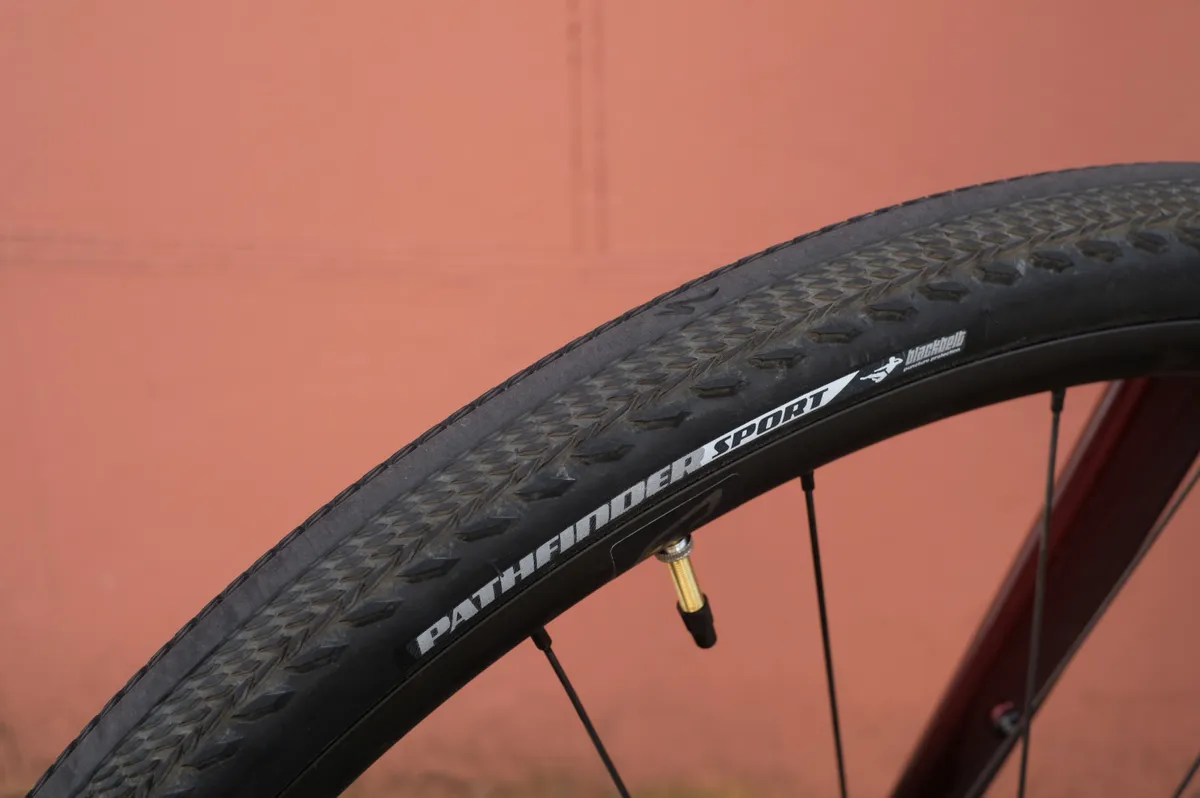
Most of the bike’s weight is focused lower down near the bottom bracket and this no doubt contributes to its planted feel. I even took the Turbo Vado SL 4.0 on some tame local mountain bike trails via a few gravel routes.
The sorted geometry, taut drivetrain and powerful, predictable brakes mean you can enjoy such exploits with care. The only weak point are the tyres, which eventually pinch flatted. Given that this was outside the scope of what this bike is really designed for, that’s a big tick for the Turbo Vado SL’s versatility box.
Tektro’s HD-R290 disc brakes are a real spec highlight. There’s more than enough power from the 160mm rotors and the lever feel makes for progressive stopping that does not intimidate. The front lever on my test bike did rattle annoyingly over rough surfaces, though.

The Turbo Vado SL delivers a firm ride overall. Its ergonomic handlebar grips and saddle do a good job of filtering out a lot of buzz but you’re always aware that the only real suspension is in the tyres. This firmness is something that suits the bike's character as a fitness tool, though.
The more expensive Turbo Vado SL 5.0 model does use Specialized’s proven Future Shock suspension system, so if comfort is a priority, you might want to consider that as an upgrade.
Specialized Turbo Vado SL 4.0 bottom line

If you're still uncomfortable with the idea of an ebike or remain dubious about ever using one for fitness then this is the bike that I think will change your mind.
Sure, it won't be replacing a road bike as a training tool but for most people looking to gently up their mileage this is a brilliant proposition.
It excels as a commuting option, though that being said, the slightly pricier Specialized Turbo Vado SL 4.0 EQ model which arrives with mudguards and a rack will likely make more sense to those going to and from the workplace.
Above all else, this is a great bike to ride with a total weight that makes it way more practical than almost all other ebikes out there.
Product
| Brand | Specialized |
| Price | €2999.00, £2600.00, $3500.00 |
| Weight | 15.41kg |
Features
| Fork | Rigid full aluminum disc, Boost™ 12x110mm, front- rack-compatible |
| Stem | Specialized Stealth Stem, alloy, 14 deg, 31.8mm, integrated TCD mount |
| Frame | Premium lightweight E5 Aluminum |
| Motor | Specialized SL 1.1, custom lightweight motor |
| Tyres | Specialized Nimbus II Sport Reflect, 700x38mm |
| Brakes | Tektro HD-R290, hydraulic disc, 160mm |
| Cranks | Praxis, Forged alloy M30, custom offset |
| Saddle | Specialized Bridge Sport, Steel rails, 155mm |
| Wheels | 700C disc, 22mm rim depth, 21mm internal width with alloy Centrelock |
| Shifter | Shimano Deore, RapidFire Plus, 10-speed w/ Optical Gear Display |
| Cassette | Shimano Deore, 10spd, 11-42t |
| Seatpost | Specialized, alloy, dual-bolt, 25mm offset, 27.2mm |
| Grips/tape | Specialized Body Geometry Contour, lock-on |
| Handlebar | Specialized Stout Mini Rise, alloy, 9-degree backsweep, 15mm rise, 31.8mm |
| Available sizes | S,M,L,XL |
| Rear derailleur | Shimano Deore, Shadow Plus, GS cage, 10-speed |
